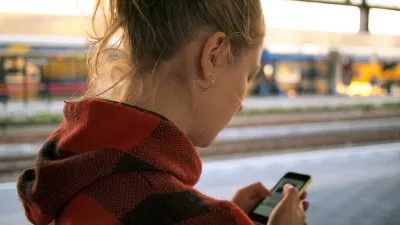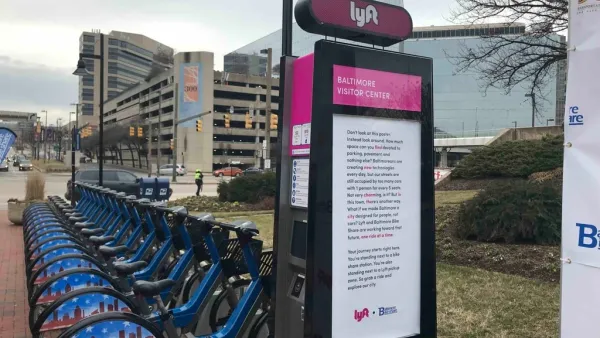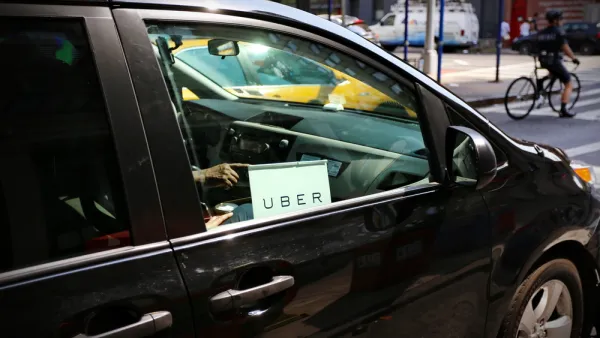A small change in the design of ride-hailing apps can make users more likely to choose walking or biking for short trips.

"In the U.S., studies have found that ride-hailing increases traffic, shrinks the number of people using public transportation, and hasn’t had much impact on car ownership, despite early arguments that Uber and Lyft might help reduce the number of cars on roads," writes Adele Peters in Fast Company. But can ride-hailing companies actually play a role in reducing car trips? European mobility app Bolt thinks so, and worked with Norway’s Institute of Transport Economics to prove it.
For a pilot in 10 European cities, when customers requested a ride for a short trip—less than 3 kilometers, or 1.9 miles—the app showed some users the nearest scooter, highlighted in green, as the second option on the screen. (Previously, if a user searched for rides, they would only see available drivers; and similarly, they would only see nearby scooters if they searched specifically for that option.) For those who saw the nudge, an average of 60% decided to shift from a car to a scooter ride, if the scooter was within 3 blocks.
Bolt cofounder Martin Villig said "By converting shorter journeys into scooter rides, we want to show people there is an alternative to owning a private car in a city and the benefits that can have in making urban areas more people-friendly." The minor change in how the app displays modes shows that small nudges can have a significant impact on mode choices.
FULL STORY: How the mobility app Bolt is nudging users away from cars

National Parks Layoffs Will Cause Communities to Lose Billions
Thousands of essential park workers were laid off this week, just before the busy spring break season.

Retro-silient?: America’s First “Eco-burb,” The Woodlands Turns 50
A master-planned community north of Houston offers lessons on green infrastructure and resilient design, but falls short of its founder’s lofty affordability and walkability goals.

Delivering for America Plan Will Downgrade Mail Service in at Least 49.5 Percent of Zip Codes
Republican and Democrat lawmakers criticize the plan for its disproportionate negative impact on rural communities.

Test News Post 1
This is a summary

Test News Headline 46
Test for the image on the front page.

Balancing Bombs and Butterflies: How the National Guard Protects a Rare Species
The National Guard at Fort Indiantown Gap uses GIS technology and land management strategies to balance military training with conservation efforts, ensuring the survival of the rare eastern regal fritillary butterfly.
Urban Design for Planners 1: Software Tools
This six-course series explores essential urban design concepts using open source software and equips planners with the tools they need to participate fully in the urban design process.
Planning for Universal Design
Learn the tools for implementing Universal Design in planning regulations.
EMC Planning Group, Inc.
Planetizen
Planetizen
Mpact (formerly Rail~Volution)
Great Falls Development Authority, Inc.
HUDs Office of Policy Development and Research
NYU Wagner Graduate School of Public Service





























